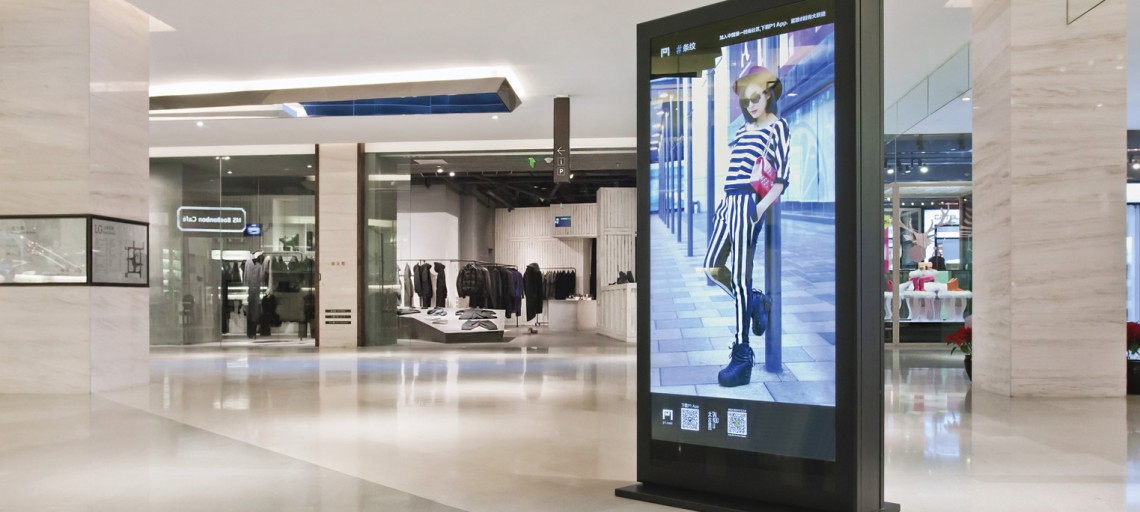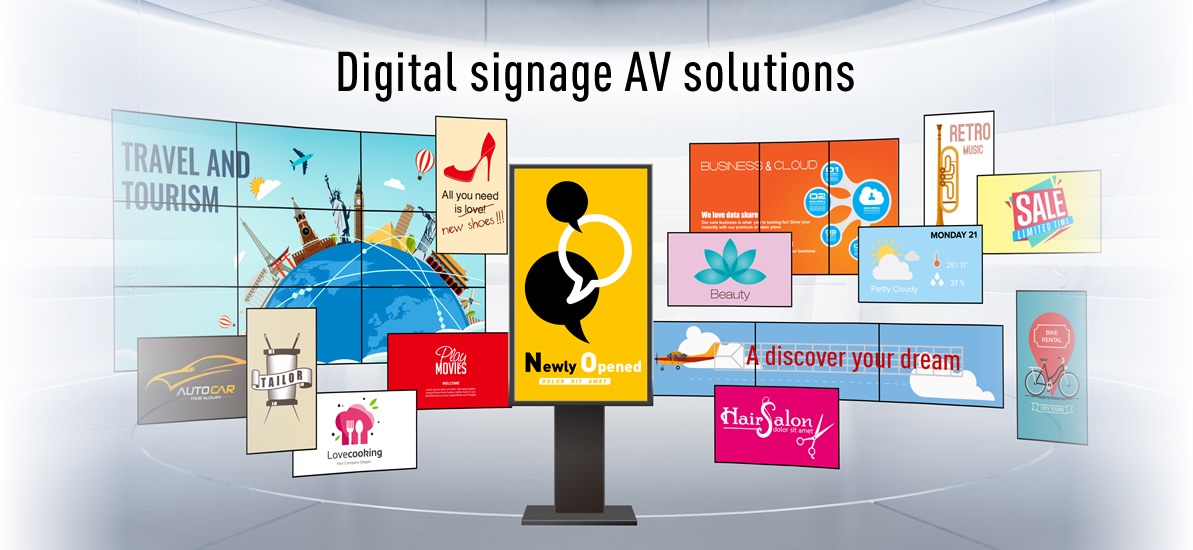
Digital Signage Solutions
Digital Signage Solutions In today's fast-paced and highly competitive business landscape, effective communication plays a pivotal role in capturing audience attention, conveying messages, and driving desired outcomes. Traditional static signage has served its purpose for decades, but in an era driven by technology, digital signage solutions have emerged as a game-changer.
What Is Digital Signage Solutions:
Digital Signage Solutions utilize state-of-the-art display technologies, dynamic content management systems, and real-time data integration to deliver engaging, interactive, and targeted messaging. This article explores the transformative power of digital signage solutions and their impact across various industries.
Enhancing Engagement:
Digital signage solutions revolutionize the way businesses communicate by capturing attention through vibrant visuals, animation, and motion graphics. Unlike static signage, digital displays are dynamic, captivating viewers and enhancing engagement. Whether it's an interactive touch screen in a retail store, a video wall in a corporate office, or a menu board in a restaurant, digital signage solutions create immersive experiences that leave a lasting impression.
Targeted Messaging:
One of the key advantages of digital signage solutions is the ability to deliver targeted messaging to specific audiences. With sophisticated content management systems, businesses can customize and schedule content based on factors like location, time of day, demographics, and even weather conditions. This level of personalization ensures that the right message reaches the right people at the right time, maximizing the impact and effectiveness of communication.
Real-Time Updates:
Traditional signage often requires manual updates, making it challenging to keep content fresh and relevant. In contrast, digital signage solutions enable real-time updates, ensuring that information is always up to date. Whether it's displaying live social media feeds, current news, or updating pricing and promotions, digital signage allows businesses to communicate in real time, keeping customers informed and engaged.
Data-Driven Insights:
Digital signage solutions offer more than just visual appeal; they provide valuable insights through data collection and analytics. By integrating with various data sources, such as point-of-sale systems, customer feedback, or social media, businesses can gather actionable data on customer behavior, preferences, and engagement. This data-driven approach enables organizations to make informed decisions, optimize messaging, and tailor experiences to drive better results.
Versatility Across Industries:
Digital signage solutions have found widespread applications across a wide range of industries. In retail, digital displays can be used for product promotions, upselling, and creating interactive experiences. In transportation hubs, they can provide real-time schedule updates, wayfinding assistance, and targeted advertising. In healthcare, digital signage can improve patient communication, display vital information, and enhance the overall patient experience. From hospitality and education to corporate environments and entertainment venues, digital signage solutions offer versatility in delivering impactful communication.
Cost-Effectiveness:
While digital signage solutions may require an upfront investment, they often prove to be cost-effective in the long run. Traditional signage involves recurring costs for printing, shipping, and installation, not to mention the effort required for manual updates. With digital signage, businesses can eliminate these ongoing expenses, streamline content management, and improve operational efficiency. Additionally, the ability to generate revenue through targeted advertising or strategic partnerships can further offset the initial investment.
Conclusion:
Digital signage solutions have revolutionized the way businesses communicate, providing a powerful platform for engagement, personalization, and real-time updates. Through vibrant visuals, targeted messaging, and data-driven insights, organizations across industries can enhance customer experiences, drive sales, and achieve their communication goals. As technology continues to evolve, digital signage solutions will continue to evolve, presenting new opportunities for businesses to captivate audiences and stay ahead in the ever-changing digital landscape. Embracing digital signage is not just a trend; it's a strategic move toward effective and impactful communication.

Digital Signage Solutions How Its Work?
Digital signage solutions are comprised of several components that work together to deliver dynamic content on digital displays. Here is an overview of how digital signage solutions work:
- Display Hardware: Digital signage solutions start with the hardware, which includes the display screens or monitors. These can range from small screens like tablets to large video walls or interactive touchscreens. The choice of display hardware depends on the specific requirements and location of the signage.
- Content Creation: Once the hardware is in place, the next step is to create compelling content for the digital displays. Content can include images, videos, animations, text, and even interactive elements. Content creation can be done using specialized software or tools that allow users to design and customize their messages.
- Content Management System (CMS): A content management system is the backbone of digital signage solutions. It is a software platform that enables users to manage and control the content displayed on digital signage screens. The CMS allows users to schedule content, update it in real time, and target specific displays or groups of displays.
- Content Distribution: After creating and organizing the content within the CMS, it needs to be distributed to the respective digital signage displays. This can be done in various ways, depending on the setup and requirements. Some digital signage solutions use local networks to distribute content, while others rely on cloud-based platforms that deliver content over the Internet.
- Playback and Display: Once the content reaches the digital signage displays, it is played back and displayed according to the predefined schedules or triggers. The digital signage software or media player installed on the display hardware handles the playback of the content, ensuring it is presented correctly and in the desired format.
- Real-Time Updates and Monitoring: Digital signage solutions often provide the ability to make real-time updates to the content displayed on the screens. This can be done remotely through the CMS, allowing users to instantly change messages, promotions, or other relevant information. Additionally, monitoring tools provide insights into the status of displays, content playback, and overall system performance.
- Integration and Data Connectivity: Advanced digital signage solutions can integrate with external data sources to enhance the relevance and interactivity of the content. For example, integrating with point-of-sale systems can allow for real-time updates of pricing or inventory information. Social media feeds, weather data, and news updates can also be integrated to provide dynamic and up-to-date content.
- Analytics and Reporting: Digital signage solutions often provide analytics and reporting features that enable users to gather insights about the performance and effectiveness of their content. Metrics such as audience engagement, dwell time, and conversion rates can be tracked to evaluate the impact of the digital signage campaign and make data-driven improvements.
Final Words:
In summary, digital signage solutions involve a combination of display hardware, content creation, a content management system, content distribution, playback, real-time updates, data integration, and analytics. By seamlessly integrating these components, businesses can leverage digital signage to deliver engaging, targeted, and interactive messages to their audience.


No comments yet